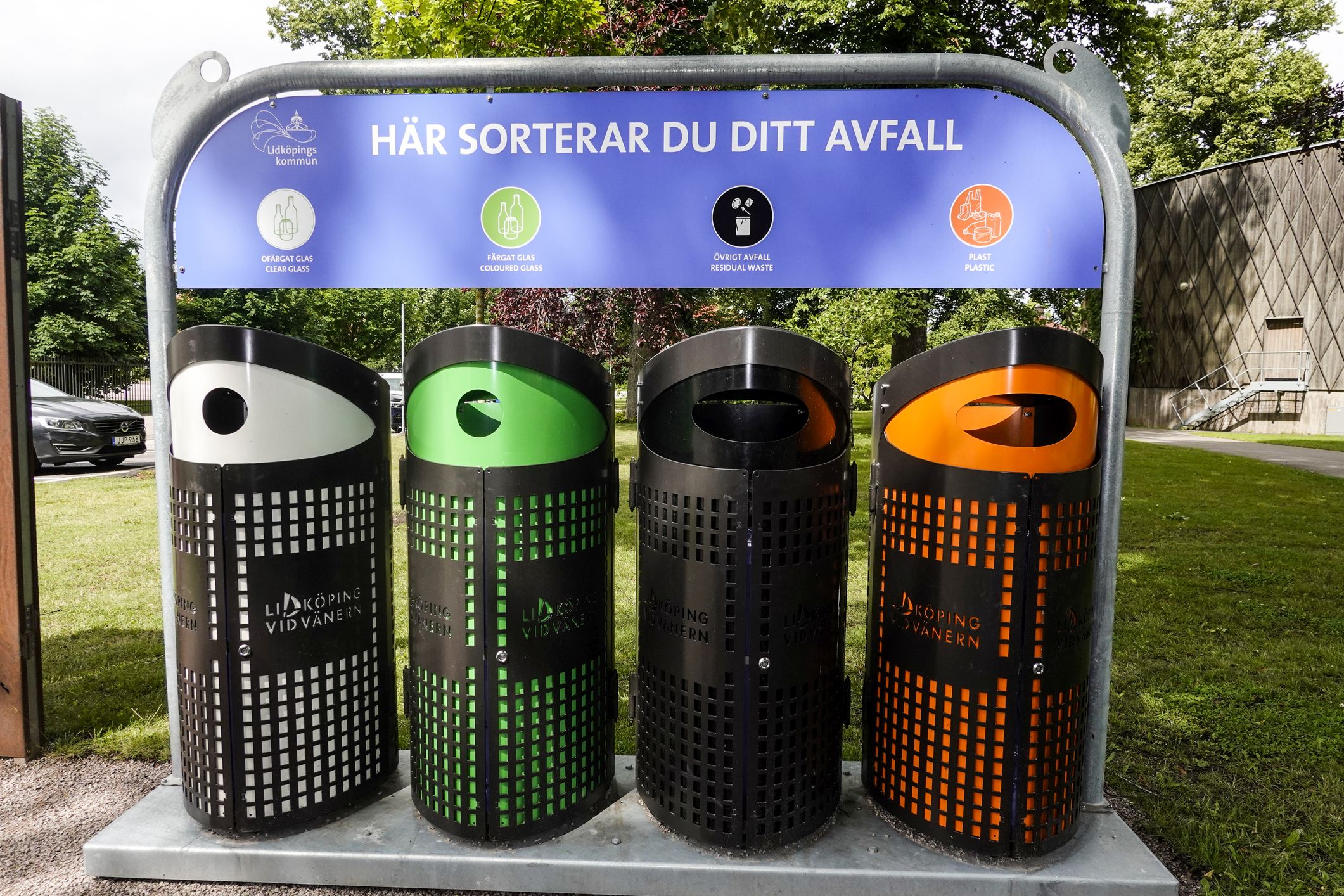Sweden is known for its efficient and advanced recycling system, with its primary goal being zero waste. This means moving beyond recycling to reusing.
It has implemented an entire waste management infrastructure focused on reducing waste and maximizing recycling efforts. Every household has two bins, one for regular waste and one for food waste. Charges are based on the volume of waste in the bin as well as the frequency of waste collection by municipalities, and the prices for waste collection are particularly high to encourage recycling over careless waste production.
But how does recycling work in Sweden? A quick overview follows these steps: source separation, recycling stations, waste-to-energy incineration, energy recovery, recycling infrastructure, circular economy approach, producer responsibility, awareness, and education.
The Process Steps
Initially, waste separation takes place. Residential areas and businesses have separate recycling bins for various types of waste, including glass, metal, paper, plastic, and organic waste. Individuals are responsible for sorting their waste correctly to facilitate recycling.
In addition to curbside collection, Sweden has numerous recycling stations located in cities and towns. These stations provide specialized containers for different types of waste. Citizens can drop off their recyclable items at these stations, ensuring that different materials are collected separately.
Next, waste-to-energy incineration occurs. Sweden has heavily invested in waste-to-energy plants. Non-recyclable waste, also known as residual waste, is incinerated to produce heat and electricity. These waste-to-energy plants are equipped with advanced technologies to minimize environmental impacts, such as filtration systems to capture harmful emissions.
The next step is energy recovery. The waste incineration process generates heat, which is used to produce steam. This steam is then used to generate electricity or for heating homes and buildings through district heating systems. This way, Sweden maximizes the energy potential of waste and reduces dependence on fossil fuels.
Sweden has created a robust recycling infrastructure that includes advanced sorting facilities. These facilities use automated processes, including optical scanners, magnets, and air jets, for precise separation of different types of recyclable materials. This sorting ensures that materials like plastic, paper, and metal are effectively recycled.
In the beginning was Reuse
This Scandinavian country promotes a circular economy approach, focusing on reducing waste production and promoting reuse. This includes initiatives such as refurbishing and repairing products, encouraging secondhand markets, and extending the lifespan of products.
It also implements the principle of extended producer responsibility. What does this mean? It means that manufacturers and importers are responsible for the management and recycling of their products. They are required to take back and recycle their products.
Strength lies in unity. This motto clearly describes the Swedes’ approach to recycling. The Swedish government, in collaboration with local municipalities, actively promotes awareness and education campaigns to encourage citizens to participate actively and effectively in recycling programs. Schools, community centers, and various organizations play a vital role in educating citizens about recycling practices.
By implementing all these measures, Sweden has achieved remarkable recycling rates, with over 99% of household waste being recycled or used for energy recovery.
The country’s great success in recycling can be attributed to a combination of effective waste management policies, advanced infrastructure, public participation, and the use of sustainable practices.

